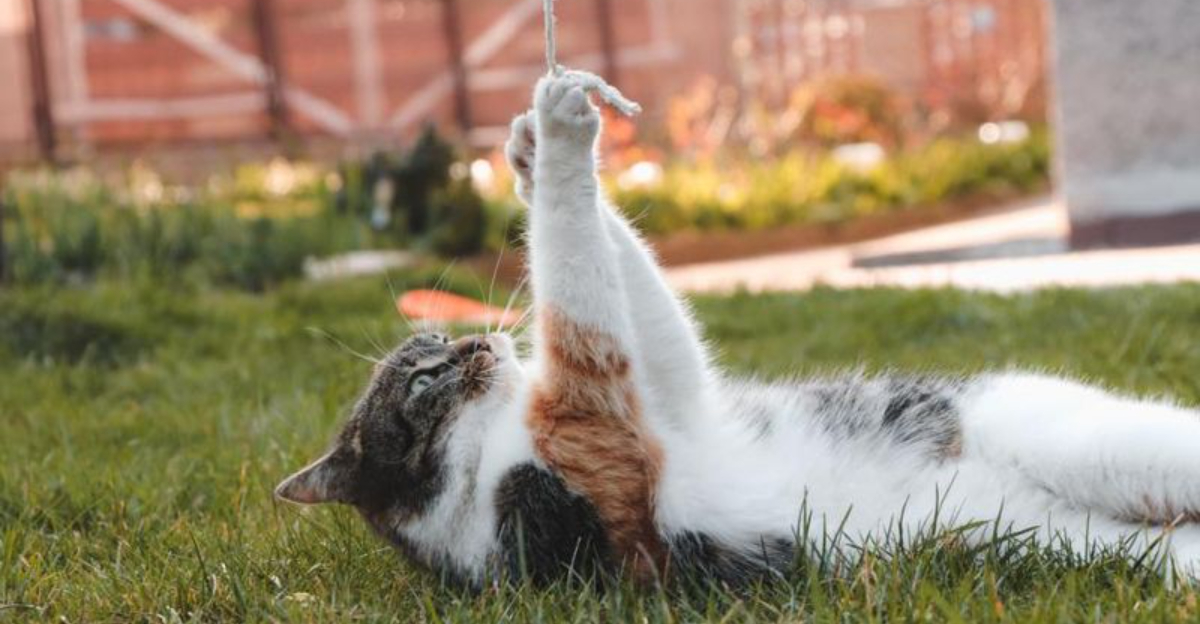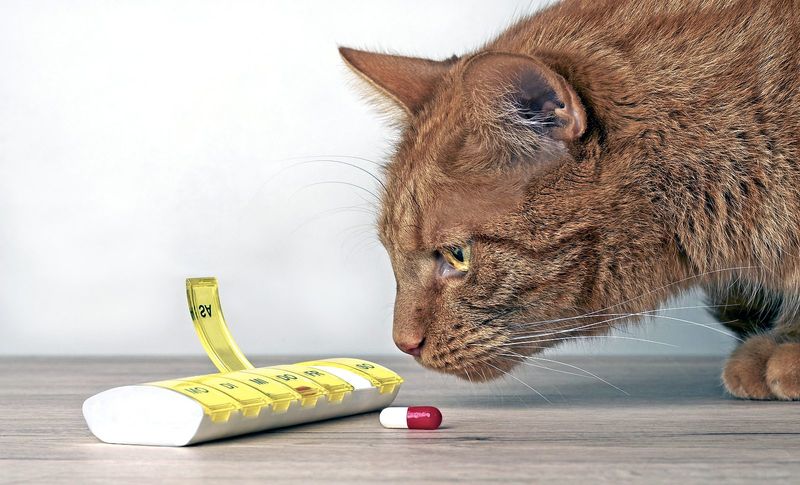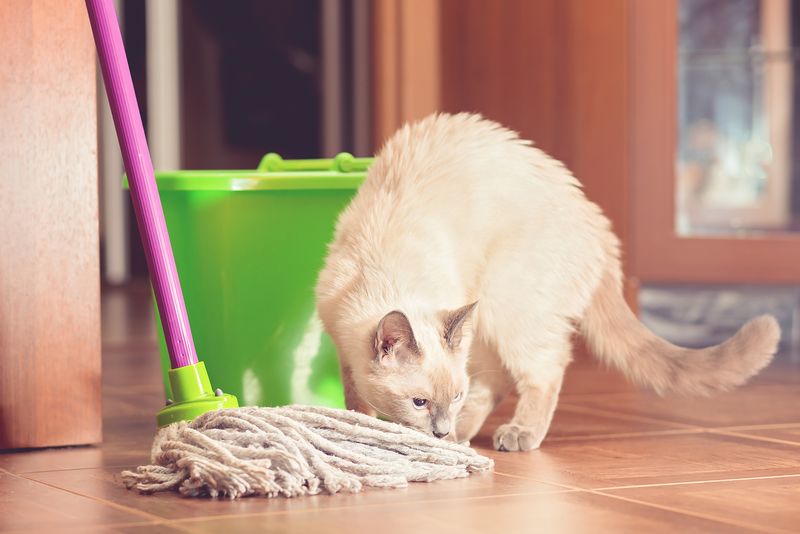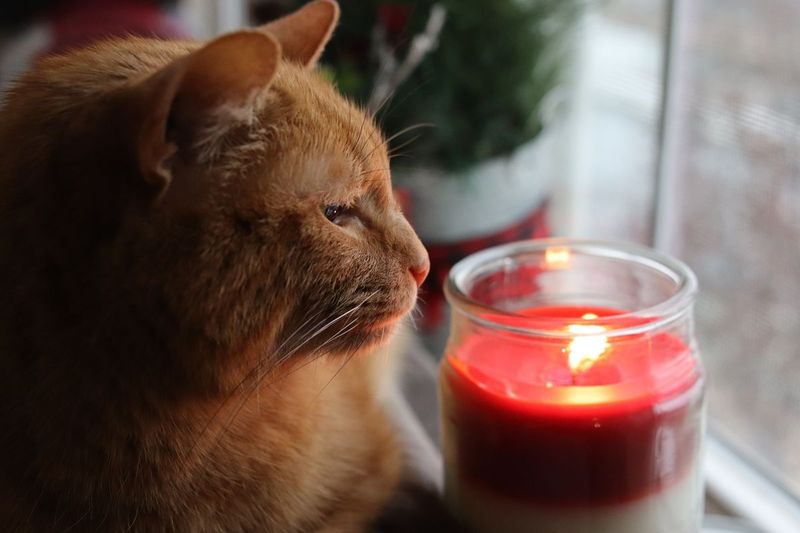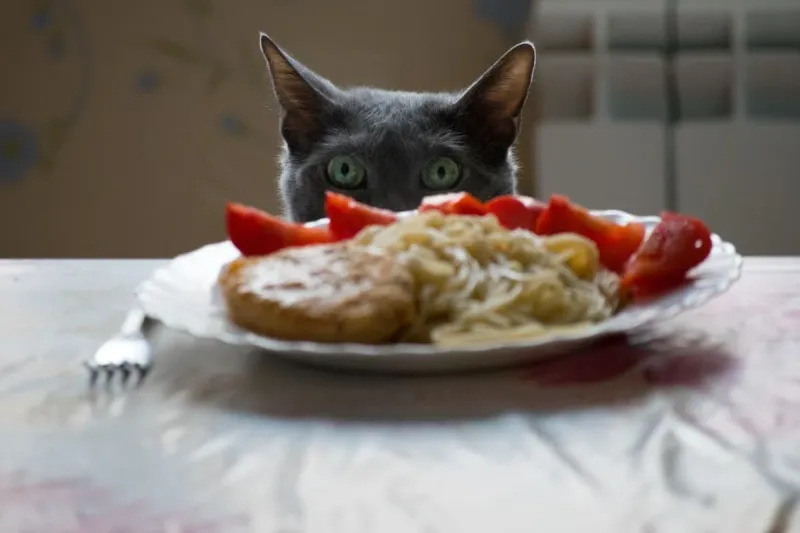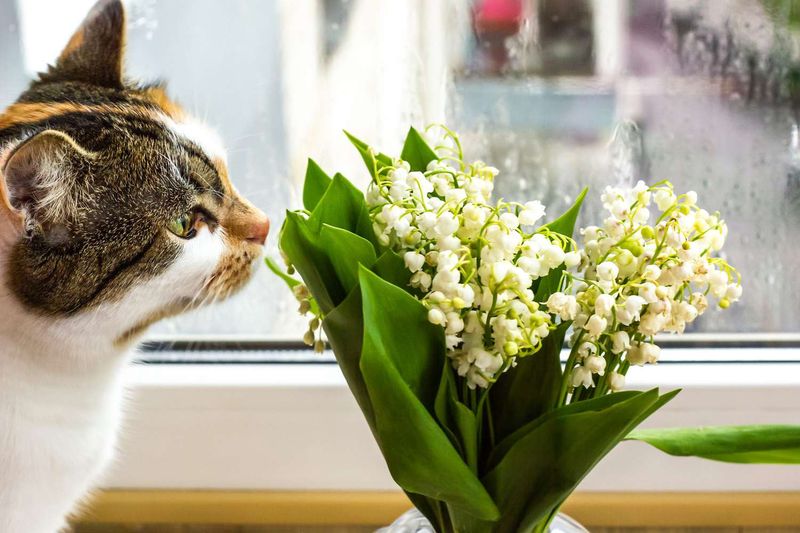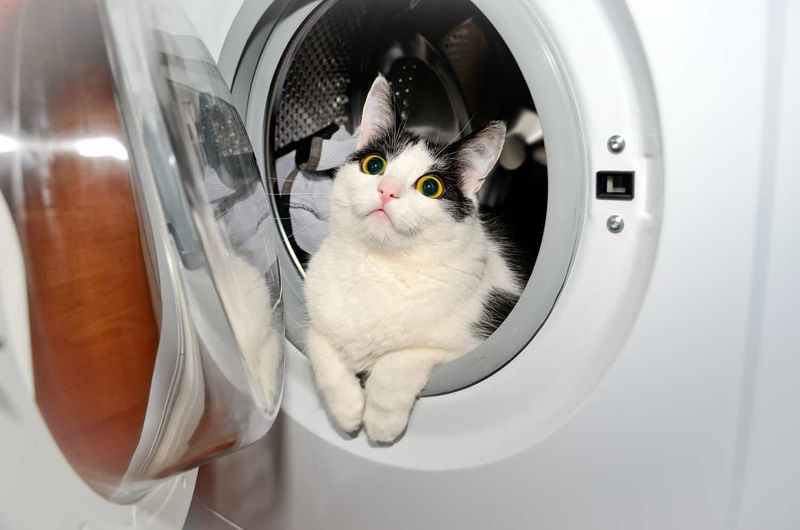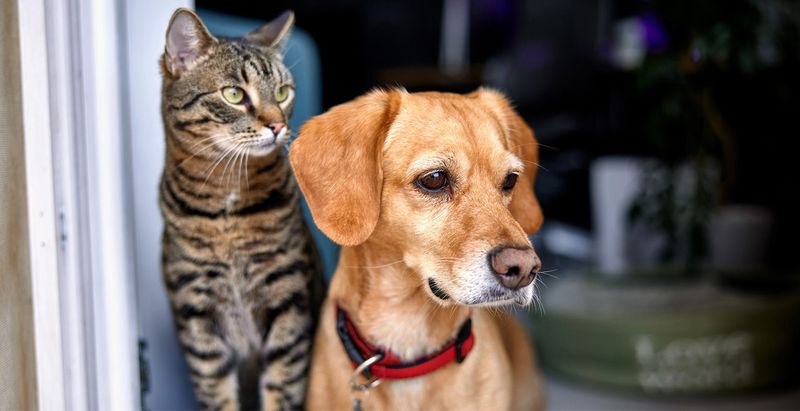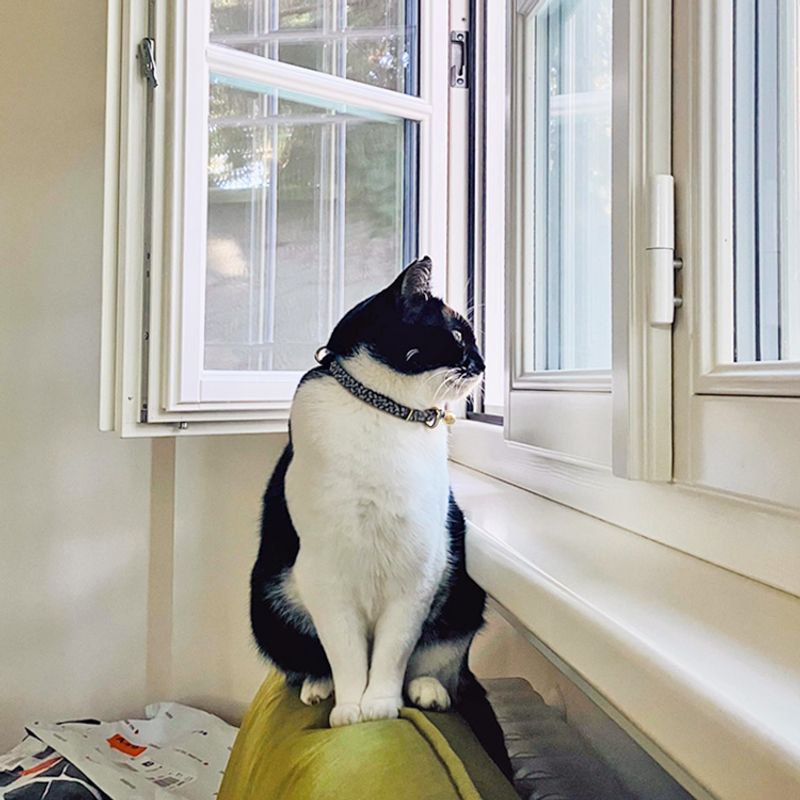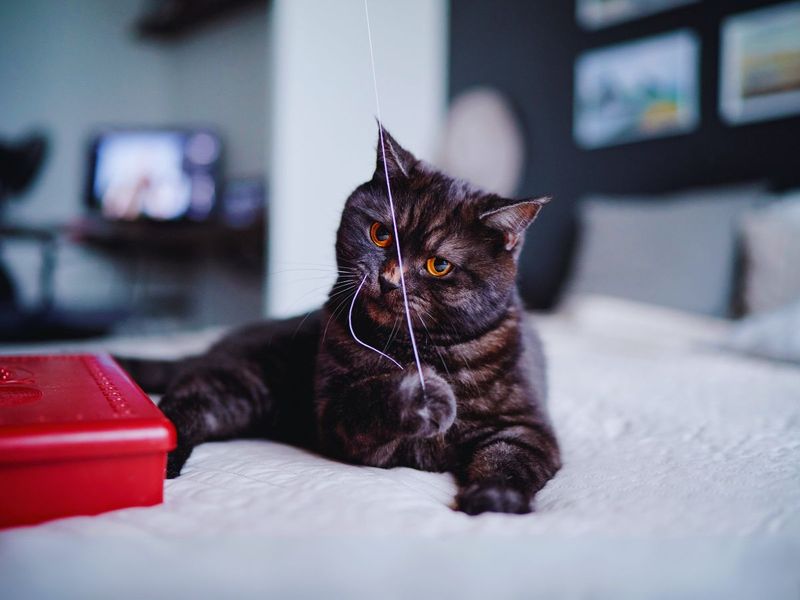📖 Table of Content:
- 1. Leaving Medication Bottles Uncapped
- 2. Using Toxic Cleaning Products
- 3. Burning Scented Candles
- 4. Offering Leftover Meals
- 5. Keeping Lilies in Your Home
- 6. Leaving String-Like Items Accessible
- 7. Running Appliances Unattended
- 8. Using Flea Products Meant for Dogs
- 9. Creating Window Access Without Screens
- 10. Leaving Small Objects Within Reach
Cats are curious creatures who explore their world with enthusiasm, but this curiosity can sometimes lead them into trouble. Many common household activities we do without thinking could pose serious risks to our feline friends. Understanding these potential dangers can help cat owners create a safer environment for their pets and prevent unnecessary trips to the veterinarian.
1. Leaving Medication Bottles Uncapped
Cats love to bat small objects around, making pill bottles an attractive target for playful paws. Many human medications are toxic to cats, with even a single pill potentially causing kidney failure, seizures, or death.
Always store medications in cabinets with secure latches, rather than on countertops or nightstands. Remember to immediately pick up any dropped pills during your own medication routine.
Pain relievers like acetaminophen and ibuprofen are particularly dangerous, capable of causing severe organ damage with just one tablet. If you suspect your cat has ingested any medication, contact your veterinarian immediately.
2. Using Toxic Cleaning Products
Many household cleaners contain chemicals that can harm your cat through direct contact, inhalation, or ingestion. Bleach, ammonia, and phenol-based products leave residues that cats may lick off their paws after walking across freshly cleaned surfaces.
Symptoms of cleaning product poisoning include drooling, vomiting, respiratory difficulties, and chemical burns on paws or in the mouth. Allow surfaces to dry completely before letting your cat access cleaned areas.
Consider switching to pet-safe cleaning alternatives like vinegar and baking soda solutions. These natural options effectively clean most surfaces without introducing harmful toxins into your cat’s environment.
3. Burning Scented Candles
The dancing flames of candles naturally attract curious cats, creating burn risks and potential fire hazards if knocked over. Beyond the obvious flame danger, the fragrances in scented candles often contain essential oils toxic to feline respiratory systems.
Cats have extremely sensitive noses and lungs. What smells pleasant to us might irritate their delicate airways, leading to breathing difficulties or asthma-like symptoms. Some cats develop allergic reactions to artificial scents.
Opt for pet-safe alternatives like LED flameless candles for ambiance. If you must use real candles, place them in stable, high locations where cats cannot reach them, and never leave burning candles unattended.
4. Offering Leftover Meals
Sharing your dinner plate might seem like a loving gesture, but many human foods contain ingredients toxic to cats. Onions, garlic, chocolate, grapes, raisins, and xylitol can cause serious health problems ranging from digestive upset to organ failure.
Fatty foods can trigger painful pancreatitis, while bones pose choking hazards or may splinter and damage internal organs. Even dairy products are problematic, as most adult cats are lactose intolerant despite the common myth about cats loving milk.
Stick to high-quality commercial cat food formulated specifically for feline nutritional needs. If you want to offer treats, choose options made specifically for cats or plain cooked chicken without seasonings.
5. Keeping Lilies in Your Home
Lilies are among the most lethal plants for cats, with all parts—petals, pollen, stems, leaves, and even the water in the vase—being extremely toxic. Just licking a small amount of pollen or drinking water from a lily vase can cause kidney failure within 36-72 hours.
Early symptoms include vomiting, lethargy, and loss of appetite. Without immediate veterinary treatment, kidney damage progresses rapidly and is often fatal. Even cats who survive may need lifelong kidney support.
Remove all lilies from your home and garden if you have cats. This includes Easter lilies, tiger lilies, Asiatic lilies, and day lilies. Check bouquets carefully before bringing them home, as florists often include lilies in arrangements.
6. Leaving String-Like Items Accessible
Cats find thin, stringy objects irresistible—ribbon, yarn, dental floss, fishing line, and even holiday tinsel. Their rough tongues have backward-facing barbs that make it difficult to stop swallowing once they’ve started.
Swallowed strings can cause a dangerous condition called linear foreign body obstruction. As the intestines try to move the string along, they can bunch up like an accordion, causing severe damage. The string may even cut through intestinal walls, leading to life-threatening peritonitis.
Store all string-like items in closed drawers or containers. After sewing, flossing, or gift-wrapping, immediately dispose of scraps in covered trash cans your cat cannot access.
7. Running Appliances Unattended
That cozy dryer might seem like the perfect nap spot to your curious cat. Unfortunately, washers, dryers, and even fridges become dangerous hiding places when appliances are started without checking first. Always look before closing the door—your cat’s safety could depend on it.
Washing machines and dishwashers pose similar risks, especially when cats jump in while you’re loading them. The confined spaces of these appliances can quickly lead to drowning, trauma, or heat-related injuries.
Make checking for cats part of your routine before starting any appliance. Keep appliance doors closed when not in use, and consider knocking on washing machine and dryer lids before starting cycles to startle any hidden cats.
8. Using Flea Products Meant for Dogs
Applying dog flea treatments to cats can have devastating consequences. Many canine flea products contain permethrin, an insecticide highly toxic to cats due to their inability to metabolize this chemical effectively.
Cats exposed to permethrin may experience tremors, seizures, hyperthermia, and even death without immediate veterinary intervention. The danger extends beyond direct application—cats who merely groom or cuddle with recently treated dogs can absorb enough toxin to become ill.
Always read labels carefully and use only products specifically formulated for cats. Keep recently treated dogs separated from cats for at least 24 hours, and consult your veterinarian about safe, effective flea control options for multi-pet households.
9. Creating Window Access Without Screens
Open windows provide refreshing breezes and entertainment for indoor cats, but without secure screens, they present a serious falling hazard. Contrary to popular belief, cats don’t always land safely, especially from higher floors.
High-rise syndrome—injuries sustained from falls from heights—commonly results in broken bones, punctured lungs, and internal injuries. Even falls from second-story windows can cause significant trauma. Cats may become so focused on birds or moving objects that they forget their precarious position.
Install sturdy screens on all windows that your cat can access. Check regularly for tears or loose fittings that determined paws might exploit. For added safety, consider specialized cat window perches that attach securely to windowsills.
10. Leaving Small Objects Within Reach
Bottle caps, rubber bands, hair ties, plastic bread tags—these seemingly harmless household items can become deadly when swallowed by cats. Foreign body obstructions often require emergency surgery and can be fatal if not addressed quickly.
Cats explore with their mouths and may bat small objects around as toys before accidentally ingesting them. Items with sharp edges can puncture digestive organs, while rubber bands may cause intestinal bunching similar to string obstructions.
Sweep floors regularly and keep desktops, counters, and tables clear of small objects. Provide plenty of appropriate cat toys as alternatives to household items, and store small objects in drawers or containers with secure lids.
